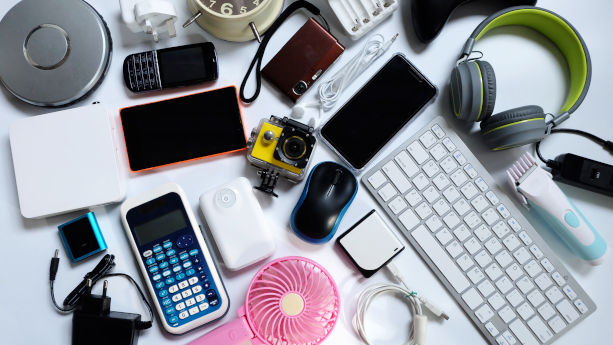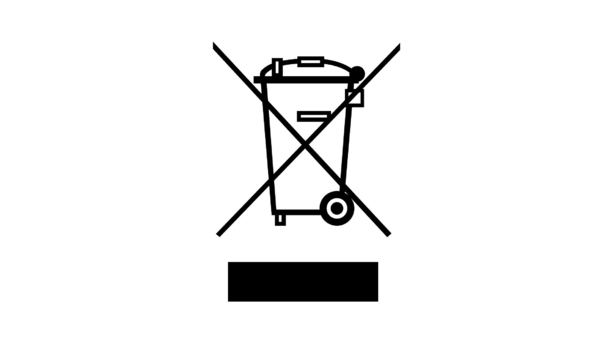
The Waste Electrical and Electronic Equipment (WEEE) Directive sets requirements concerning electronic waste materials. Ensuring compliance with the WEEE Directive requires that your products are correctly labelled, and the participation in waste collection schemes.
Content Overview

FREE CONSULTATION CALL (30 MIN)
 Ask questions about compliance requirements
Ask questions about compliance requirements Countries/markets:
Countries/markets:
 Learn how we can help your business
Learn how we can help your business
You will speak with:Ivan Malloci or John Vinod Khiatani
What is the WEEE Directive?
The WEEE Directive establishes measures to help protect human health and the environment by diminishing the negative effects of generating and managing WEEE.
It generally requires producers – which includes importers and manufacturers – to:
a. Properly label their product with the separate collection symbol
b. Provide the necessary documentation
c. Register in the EU country where they sell their products
d. Report to the relevant national authorities the type and quantity of equipment they manufacture, distribute, and sell
e. Be responsible for collecting and treating their waste equipment, for example by hiring a waste management company.
Which products are covered by the WEEE Directive?
According to Article 2, the WEEE Directive applies to all electrical and electronic equipment (EEE), unless exemptions apply:
(b) from 15 August 2018, subject to paragraphs 3 and 4, to all EEE. All EEE shall be classified within the categories set out in Annex III. Annex IV contains a non-exhaustive list of EEE which falls within the categories set out in Annex III (open scope).
Here are some examples of covered products:
- LED lamps
- Refrigerators
- Heat pumps
- Televisions
- Laptops
- Washing machines
- Copying equipment
- Vacuum cleaners
- Calculators
- Mobile phones
- Printers
Exempted products
Here are some examples of exempted products, as listed in article 2:
- Filament bulbs
- Space-exploration equipment
- Large-scale and stationary industrial tools
- Large-scale fixed installations
- Products meant to transport products or persons
- Non-road mobile machinery specifically for professional usage
- Infective and active implantable medical and in-vitro devices
- Components installed in exempted equipment
Documentation requirements
The WEEE Directive requires producers to provide various documentation and information.
| Title | Description |
| Information for users | Producers should inform consumers how much the collection, treatment, and disposal of products cost. For household products, they should also provide information, for example in the instructions for use, on:
|
| Reporting information | Producers should submit a regular report to the national authorities. This report should contain the information specified in Annex X Part B, such as the amount of EEE sold and collected. |
Labelling requirements

You must label your EEE with the separate collection symbol specified in Annex IX of the directive. If the size of the EEE prevents you from affixing the symbol onto the product, you should print the symbol on the packaging, the user instructions, and the EEE’s warranty.
Registration requirements
Article 16 requires producers to register in the EU country they sell their products in. They should provide the information listed in Annex X Part A, which includes:
- Name and address
- National identification code and European (or national) tax number
- Relevant category of EEE
- Type of EEE (e.g. household, or non-household, equipment)
- Brand name of EEE
- Information on how the producer carries out its responsibilities (e.g. via an individual or collective scheme, and its financial guarantee)
- Selling technique
- A statement declaring that the provided information is factual
According to the EU’s yourEurope page regarding WEEE responsibilities, you can find a list of national registers in the European WEEE Registers Network.
Waste management companies can help you fulfil your registration requirements. Some waste management companies can also act as authorised representatives for companies not based in the EU. You can find a list of such companies in the WEEE Forum.
Collection requirements
According to Article 12, producers are financially responsible for collecting, treating, recovering, and disposing of EEE. They may either fulfil this obligation individually or hand this responsibility to a waste management company, as they can help you collect your WEEE in exchange for a fee.
Here we list some waste management companies and their respective costs for collecting WEEE. Note that the costs depend on the product and the quantity:
a. Germany – INTERZERO: 399.90 Euro for 250 kg of heat exchanger
b. France – ECOLOGIC: 10.5 Euro per washing machine unit
c. The Netherlands – STICHTING-OPEN – 0.60 Euro per kg of refrigerated vending machine
Some companies also require you to pay a yearly fee in exchange for their services.
Reporting requirements
According to Article 16, producers should provide the information specified in Annex X Part B when they submit a report to the national authorities:
a. Producer’s national identification code
b. Reporting period
c. Category of EEE
d. Quantity, by weight and category, of EEE sold
e. Quantity, by weight and category, of WEEE separately collected, disposed of, prepared for reuse, recovered, and recycled
As for other responsibilities, many waste management companies can help you to fulfil the reporting requirements.
Requirements for shipping used EEE
Annex VI lists the minimum requirements a producer should meet for shipments of used EEE, in order to ensure that such products are not mistaken for WEEE. These requirements include making available:
a. A copy of the invoice stating that the EEE is meant to be reused and works as intended
b. Proof of functionality of every item (e.g. certificate of testing)
c. A declaration stating that the shipping consignment does not contain waste equipment or material
d. Appropriate packaging to protect against damage during transportation
FAQ
Does the WEEE directive apply to manufacturers?
In general, the directive sets requirements for producers. According to Article 3, the definition of producer includes companies established in the EU that manufacture EEE under their name. As such, the WEEE Directive applies to manufacturers.
Does the WEEE directive apply to importers?
The definition of producer also includes companies established in an EU country that have EEE designed or manufactured under their name and sell it in one or more EU countries.
Thus, even if the directive does not directly mention “importers”, it would also apply to companies importing electronics.
Does the WEEE directive apply to resellers or distributors?
Article 3 explains that resellers are not under the definition of producers as long as they purchase products from other companies in the EU, and do not resell them under their name. Thus, our understanding is that the directive does not apply to resellers who buy products in the EU and sell them under the name of their supplier.
As for distributors, Article 3 defines them as companies that sell products in the EU. It also explains that distributors are regarded as producers if, for example, sell products under their own brand. Thus, there are cases in which the directive applies to distributors.
Does the WEEE directive apply to non-EU companies?
According to Article 3, the definition of producer also includes companies that are established in a third country and sell EEE online in the EU.
Note that producers that are not established in the EU member state where they sell their product, can choose to register in such state via an authorised representative.






















.png)
.png)
.png)




